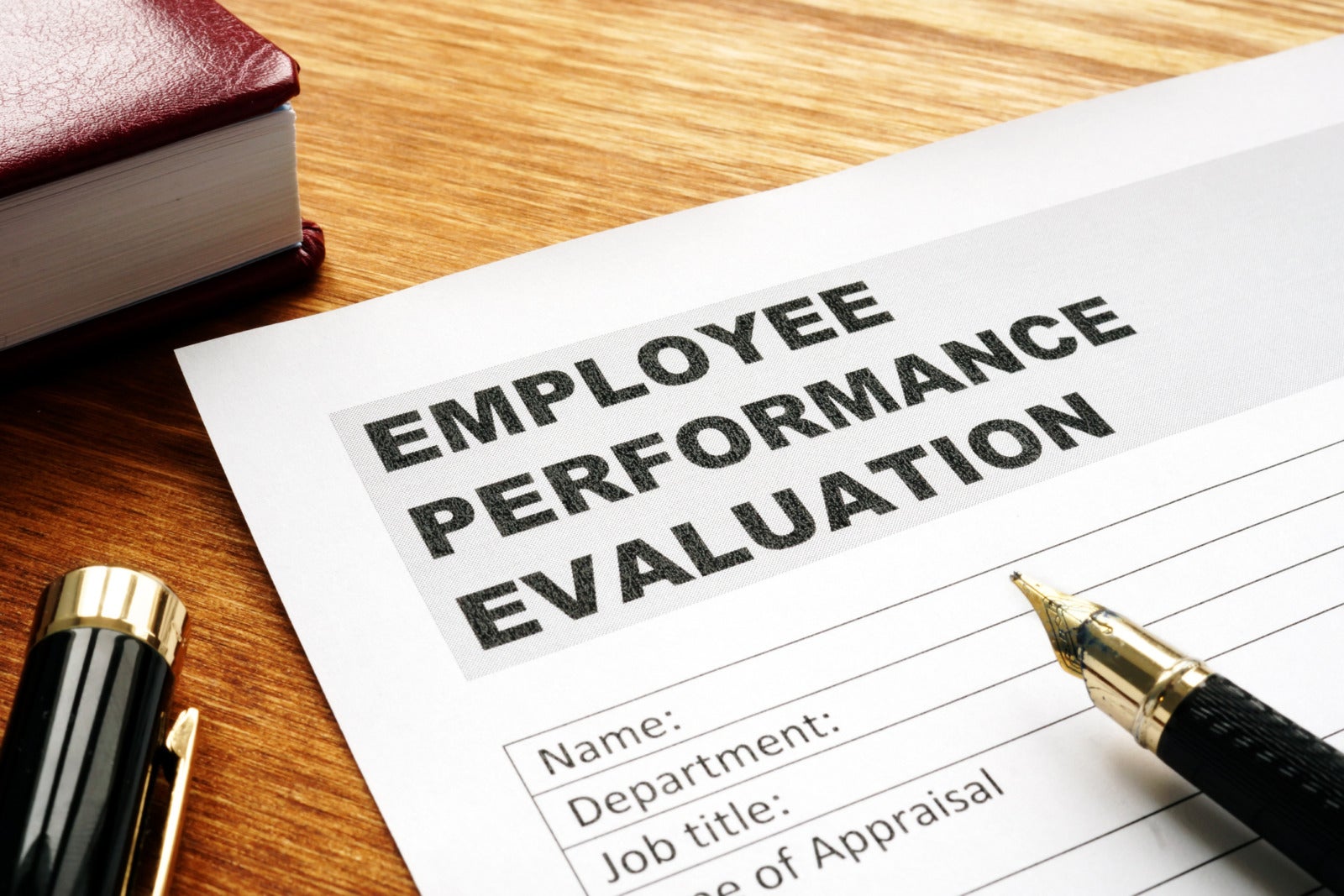With many workplaces adopting remote and hybrid working practices, performance reviews will have to adapt to the current state of your business. There’s no one size fits all when it comes to performance reviews, but there are a few things that will ring true for everyone.
We’ll start with the basics.
What is a Performance Review?
A performance review, also known as an appraisal, is a formal evaluation in which a manager assesses an employee’s job performance. They do so by identifying strengths and weaknesses, offering constructive feedback, and helping set goals for future performance.
When Should Performance Reviews Happen?
Performing end-of-year reviews alone has been dismissed by many as an outdated approach to evaluation. Unfortunately, there’s no definite answer for when performance reviews should happen. Some reviews do still take place closer to the end of the year when an employee’s work over the past 12 months informs feedback and decisions. For a lot of businesses, though, this is changing.
What’s right for your team? Regular check-ins are becoming more popular, especially in remote settings. It all depends on the size, needs, and resources of your company. 81 percent of employees would prefer at least quarterly check-ins with their manager, according to a Growth Divide survey.

How to Deliver an Effective Performance Review
Appraisals will differ significantly from business to business and employee to employee. Take these steps into account when planning your upcoming performance reviews.
-
Set Clear Expectations
Regardless of the situation, it’s crucial to set expectations for your reviews upfront. This gives employees the chance to come prepared and ready for any feedback they are going to receive. At the end of an anxiety-ridden, unpredictable year, the things that you should focus on should reflect the times we’re in. For example, instead of poking at where someone’s performance fell down, focus on how they’ve overcome change and how they can hone that in their future work.
-
Be Realistic
It’s probably not the most practical thing to look back at the goals that were set at the end of last year or the start of this year. They will likely have changed significantly or might have been rendered irrelevant.
According to a McKinsey & Co. and LeanIn.org survey, about 30 percent of companies said they adjusted performance evaluations to account for challenges created by the coronavirus, and 5 percent have put reviews on hold or canceled them. Now’s a good time to reevaluate, make some changes, and create a realistic review process.
-
Show Kindness and Empathy
Keep in mind that each employee has different struggles. A star employee might be struggling with heightened mental health issues, and another could be struggling with day-to-day tasks because they have two kids fighting for their attention during work hours.
Anna Tavis, a clinical associate professor of human capital management at New York University, has some good advice:
“Everyone is stretched in their own way,” she says. Your goal, therefore, is “to make an empathetic assessment” based on “where your people are.”
-
Personalize Each Review
As we mentioned above, each situation will differ. It’s important to be prepared and have specific talking points for each individual. Here are a few things you could focus on instead of the time on the clock:
- Results and outcomes
- Soft-skill development
- Opportunities for collaboration
- Adapting to change
- Overcoming struggles
For each of the above, think about how it applies to the employee in question and tailor your talking points to their year.
What’s Next?
Performance reviews are all about looking back to look forward.
Career progression is important to most employees, with 86 percent of them saying they’d quit their jobs for ones that offered better opportunities for professional development. Create an action plan alongside employees and decide what they can do in the upcoming year, how you can help them work towards these goals, and how they can contribute to broader company objectives.





